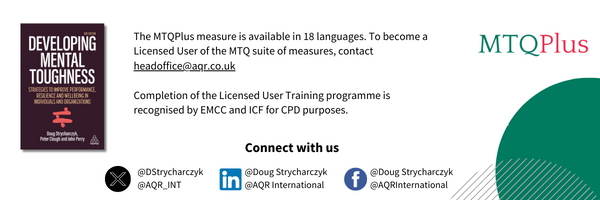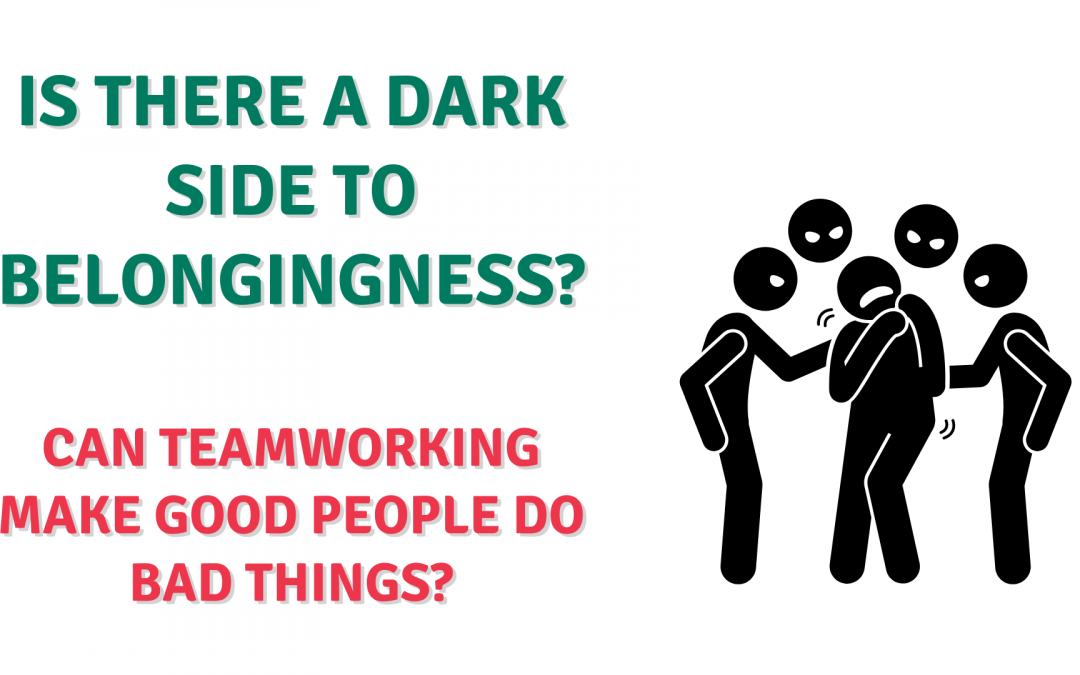Can teamworking make good people do bad things?
Gordon Ryan, Chartered Occupational Psychologist, Prism Work Psychology.
On a cold and dark March night, I was out running with some friends. I spoke about work I had been doing on Belongingness and its role in effective team performance. Maybe I was trying to distract us from the task at hand.
Belongingness is the subjective feeling of deep connection with social groups, physical places, and individual and collective experiences. Collective experiences could include a sense of being bound together through a shared purpose.
Belongingness is central to a number of need theories. For example, in Maslow’s1 third level of the hierarchy of needs. Moreover, it has been shown to predict numerous mental, physical, social, economic, and behavioural outcomes 2. However, how does it play out within and on a team?
Owen Eastwood3 provides many case studies of the role of belongingness and identity across organisational and sporting teams. He has approached this using the Māori concept of Whakapapa – a shared identity shaped for the future but informed by our past – driving a shared purpose underpinned by the principle that ‘you belong here’.
What is clear from his work is that belongingness creates the terms of what it means to be within the team and is aligned with a strong sense of what it means to belong to the team. This is consistent with commitment, confidence, challenge and control elements that come together to form the Mental Toughness4 concept.
In conversation with Amy Edmundson 5,6, we discussed whether there may be an overlap between Belongingness and Psychological Safety in teams. Amy’s view is that these are separate concepts and I agree. However, it seems that Belongingness might have an important role in building the way team members engage in speaking up – whether this comes from a position of self-interest or collective interest.
This raises the question of whether there may be such a thing as healthy and unhealthy belonging within a team.
Underdeveloped needs may deprive us of things which may be good for us – limiting our capacity to engage, strive and grow. Overdeveloped needs may leave us vulnerable to dependency and exploitation. Ensuring there is the appropriate emotional regulation and control is potentially a key ingredient in whether our needs remain healthy.
But what does it look like when the need for belongingness is unhealthy within a team? Is there a dark side to belongingness?
Tajfel & Turner7 described Social Identity Theory. From this grew the idea of in-groups and out-groups. The in-group defines itself. Everything else is ‘other’ or out-group.
Basically, the ‘in-group’ is creating somewhere like-minded souls belong. However, being ostracised and excluded has a huge emotional and physical toll.
Interestingly, Eisenberg and colleagues8 showed that being excluded (out-grouped) is the only known emotion that has the same MRI brain pattern as pain. This impacts on cognitive functioning. All factors that are likely to have a negative impact on both the individual and the team’s effectiveness overall.
If we spend our time, focus, energy and effort on retaining our position within the team and avoiding ostracization, this is not a psychologically safe relationship or team.
If we look at Tuckman’s model of team development – it might be concluded that teams need a degree of argument and disagreement to function optimally. Otherwise, the end goal of teams can often be to stifle creativity and momentum.
Studies on mental toughness in groups show that the more mentally sensitive are more likely to adopt convergent thinking and that the more mentally tough tend to divergent thinking4. It could precipitate what Skip Bowman9 calls a ‘protective mindset’.
We are likely to engage in outwardly pro-social team behaviour (agreeing, convergent thinking, acquiescence, flying under the radar, etc) rather than adding genuine value through divergent thinking, challenge, questioning and reflecting on how mistakes can drive learning. Feeling a sense of responsibility for the team’s success and by extension a responsibility to do the right thing.
It seems clear that belongingness has the potential to be a strong moderating factor in many of the cultural and leadership principles we take for granted. A clear evidence base for this is still in its infancy (but I am working on it) but it is drawing a great deal of interest and attention.
Recent events have provided a case study through which this can also be examined.
Dark Side to Belongingness Case Study
In February 2024, in the UK, Lady Elish Angiolini10 published Part 1 of a three-part inquiry into policing. The inquiry was in response to the murder of Sarah Everard, a member of the public, by a serving police officer and the subsequent uncovering of incomprehensible workplace behaviours by some teams involving the use of WhatsApp.
What makes it possible for people who know what they are doing is wrong (racist, sexist and homophobic messages) to accept this to be acceptable within a group/team? The fear of ostracization is a strong factor. People create a cognitive dissonant narrative that allows them to engage (e.g. “It’s only a joke”; “I don’t condone it. I am not really that involved”). A stronger sense of belonging than that of purpose seems to prevail.
Where the Mental Toughness elements of confidence, control, commitment and challenge are suppressed by poor belonging and psychological safety the potential for counterproductive workplace behaviours can thrive.
Hints and Tips
So how do we make belongingness work to support a high-performing team culture? Here are some areas to consider for your individual and collective leadership:
- Create a collective identity and purpose.
- Gain agreement on what it means to belong in a positive and healthy way.
- Reduce the hierarchy of belongingness – remove the conflict that it is more important to belong to your local team than the organisational team.
- Develop collaborative, cross-functional and cross-cutting working teams. Defined by a shared purpose and deliverables and not functional inputs.
- Develop psychological safety – both within and beyond individual teams. Test that there is divergent thinking and learning from meaningful mistakes.
- Analyse governance information to reassure yourself that there is open reporting.
- Create self-awareness about one’s pattern of mental toughness and its factors. Helping to explain why people respond the way they do in a range of settings. This should allow people to optimise the benefits of cohesive teams – wellbeing, efficiency etc – whilst minimising the constraints by reducing ‘protective mindsets’ and promoting “speak up” behaviours.
I provide coaching and consultancy services to developing individuals and teams.
To learn more about my work contact Gordon Ryan through gordon@prismworkpsychology.com

References:
1 Allen, K, A, Kern, M, L, Rozek, C, S, McInereney, D, and Slavich, G, M, (2012). Belonging: A Review of Conceptual Issues, an Integrative Framework, and Directions for Future Research. Aus J Psychol. 2021 Mar 10; 73(1): 87–102.
2 Maslow, A. H. (1943). A theory of human motivation. Psychological Review, 50(4), 370-96.
3 Eastwood, O. (2021). Belonging: The Ancient Code of Togetherness. Quercus
4 Clough, P., Strycharczyk, D., and Perry, J. (2021). Developing Mental Toughness: Strategies to Improve Performance, Resilience and Wellbeing in Individuals and Organizations. Kogan Page.
5 Edmundson, A, C. (2018). The Fearless Organisation. Wiley.
6 Edmundson, A, C. (2023). Right Kind of Wrong: Why Learning To Fail Can Teach Us To Thrive. Cornerstone Press.
7 Tajfel, H., Turner, J. C., Austin, W. G., & Worchel, S. (1979). An integrative theory of intergroup conflict. Organizational identity: A reader, 56-65.
8 Eisenberg, N, Liberman, M, D, and Williams, K, D, et al (2003). Does rejection hurt? An FMRI study of social exclusion. Science. 2003 Oct 10;302(5643):290-2. doi:10.1126/science.1089134.
9 Bowman, S. (2023). Safe to Great; The New Psychology of Leadership. Figure 1. Canada.
10 The Angiolini Inquiry; Part 1 (2024).
https://iipcv-prod.s3.eu-west-2.amazonaws.com/E02740018_Angiolini-Inquiry.pdf. Downloaded 29 February 2024.
- Tuckman, Bruce W (1965). “Developmental sequence in small groups”. Psychological Bulletin. 63 (6): 384–399


